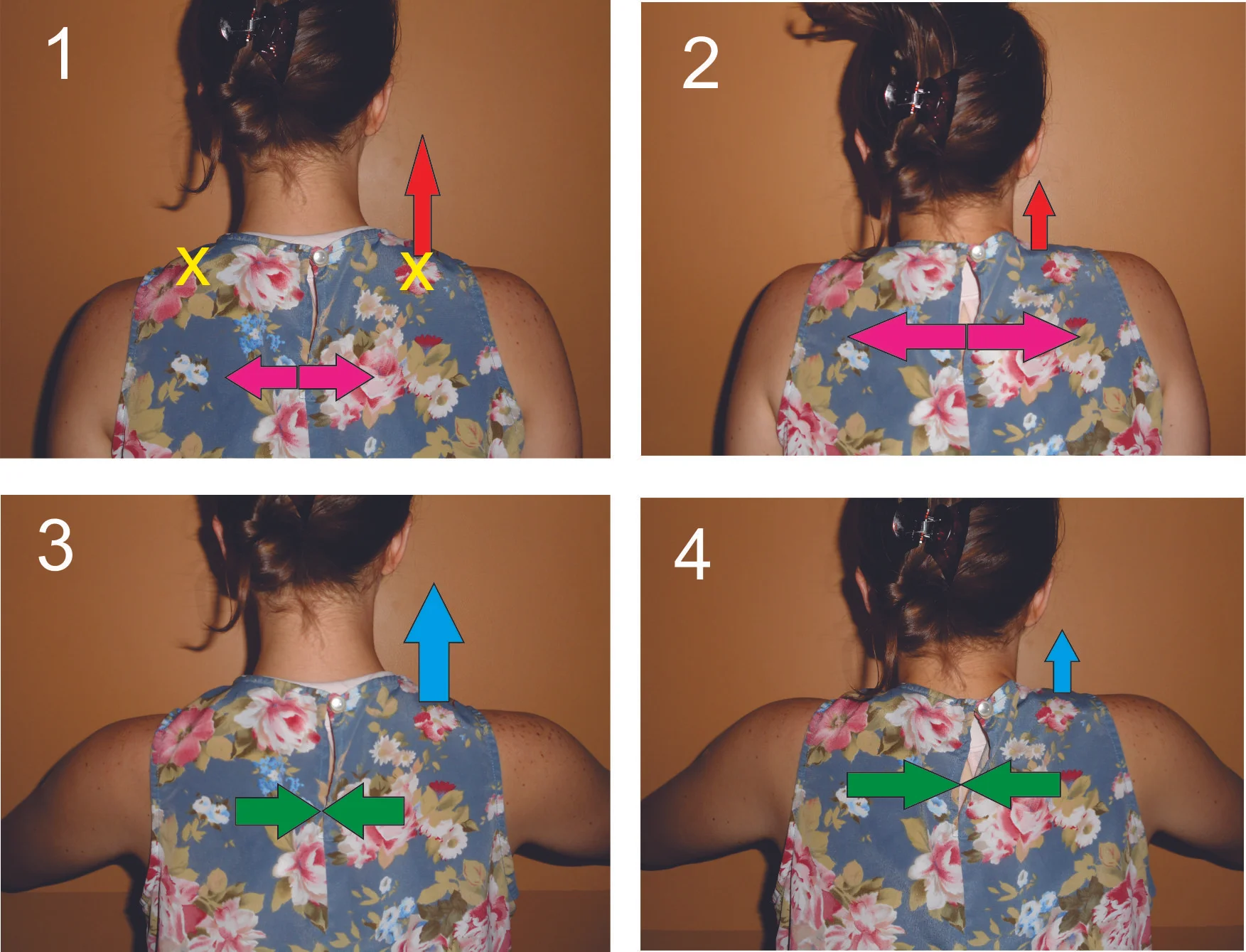Upper Trap Pain
One of the most common complaints we hear from our patients is what many refer to as "shoulder pain". This is the area from the lower neck to the shoulder joint which is usually caused by spasm or trigger points in the upper trapezius muscle. Many times this spasm is due to overuse of this muscle. It can be due to poor posture or using this muscle in substitution for the actual shoulder muscles.
In one case, when one rounds their shoulders, the upper traps begin to contract in compensation to this poor posture and over time they get tighter and tighter developing spasms or trigger points. In a second case, when one raises their shoulders/arms, instead of moving from the shoulder joint itself, the person uses the upper traps to lift the arm and thus, overuses this muscle again.
In another scenario, most activities we perform involves a "reaching forward" position (eg. driving, eating, and working at the computer). While keeping the arms upward in a forward position, the muscles that stabilize the shoulder blade are weak, or not being used, again, the upper traps "kick in" to hold the arms in position. Again, we see the overuse and fatigue of the upper traps.
Continued poor posture with contracted upper trapezius muscles and its associating factors can lead to poor bio-mechanics of the upper body and can eventually cause conditions such as cervical (neck) degeneration, herniated discs, and shoulder joint and rotator cuff problems.
So what can we do to help overcome shoulder pain?
Firstly, practice good posture. Instead of letting the shoulder blades fall forward, creating a round shouldered posture, place a little tension between the shoulder blades to help keep them together. Secondly, when using the shoulders and arms, make sure to keep the shoulder blades stable and move from the shoulder joint itself, and be mindful not to raise from the upper trap muscles. Over time, and with practice, you will notice less pressure in this area, and should help to decrease the pain in this muscle.
Figure 1: "X" marks the spot where many people have complaints of muscle tension and pain. These are the spasm and trigger points of the upper trapezius muscle. If we compare Figure 1, where the person has good posture, to Figure 2, where the person has contracted upper traps, we can see how the distance from the muscle to the ear (the red arrow) becomes considerably less. This is due to the extreme tension in the muscle. Also, the distance from the mid-line to the shoulder blade (the pink arrow) becomes longer, because the shoulder blades are moving further away from the spine. This causes weakness and spasms in the muscles that are stabilizing the shoulder blades.
Figure 3 shows how tension should be held in the medial shoulder blade muscles. Just a little "pinch" or tension in these muscles (in the direction of the green arrows) helps to keep the shoulder blades from weakening, which is a contributing factor in a "round shouldered" posture.
In both Figures 3 and 4, we can see the difference when the arms are lifting up. This can occur during activities such as driving or using the computer. Within the Figures, we can see the distance from the muscle to ear (the blue arrow) becoming shorter because the person is lifting their arms with their trapezius muscle instead of their shoulder muscles. Once again, we see the shoulder blades separating from the mid-line (the green arrow) because of the weakness in these muscles.
To learn more about our Ergonomics services, please visit here.


